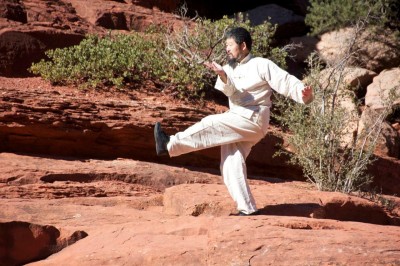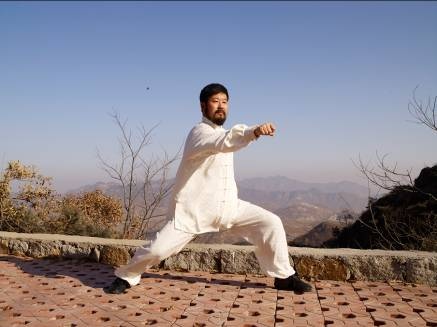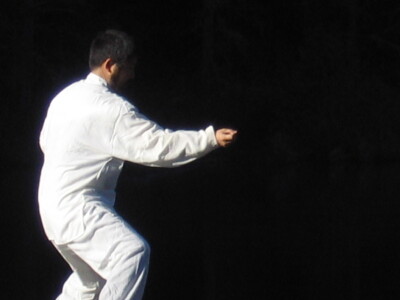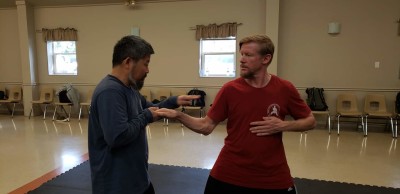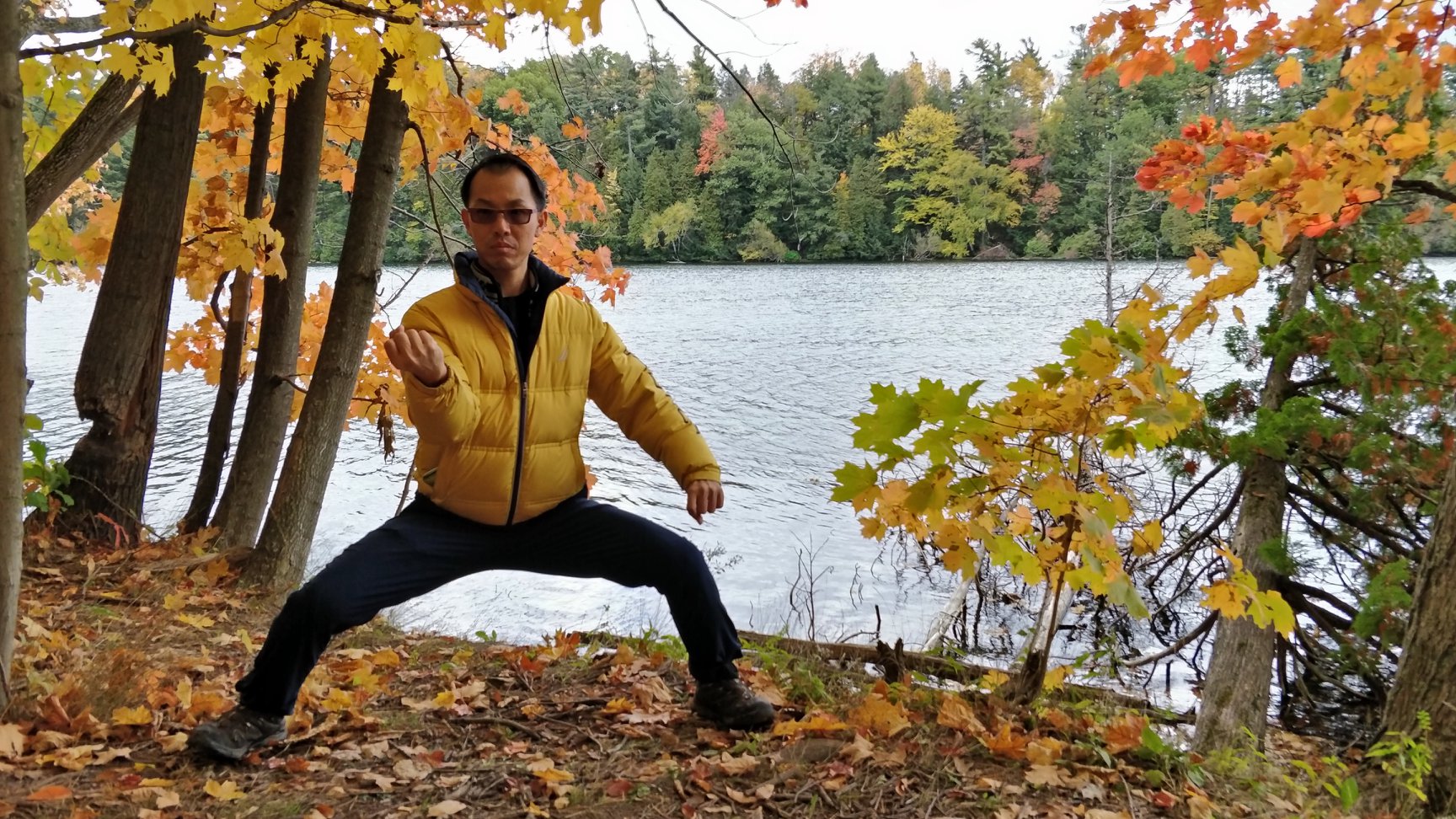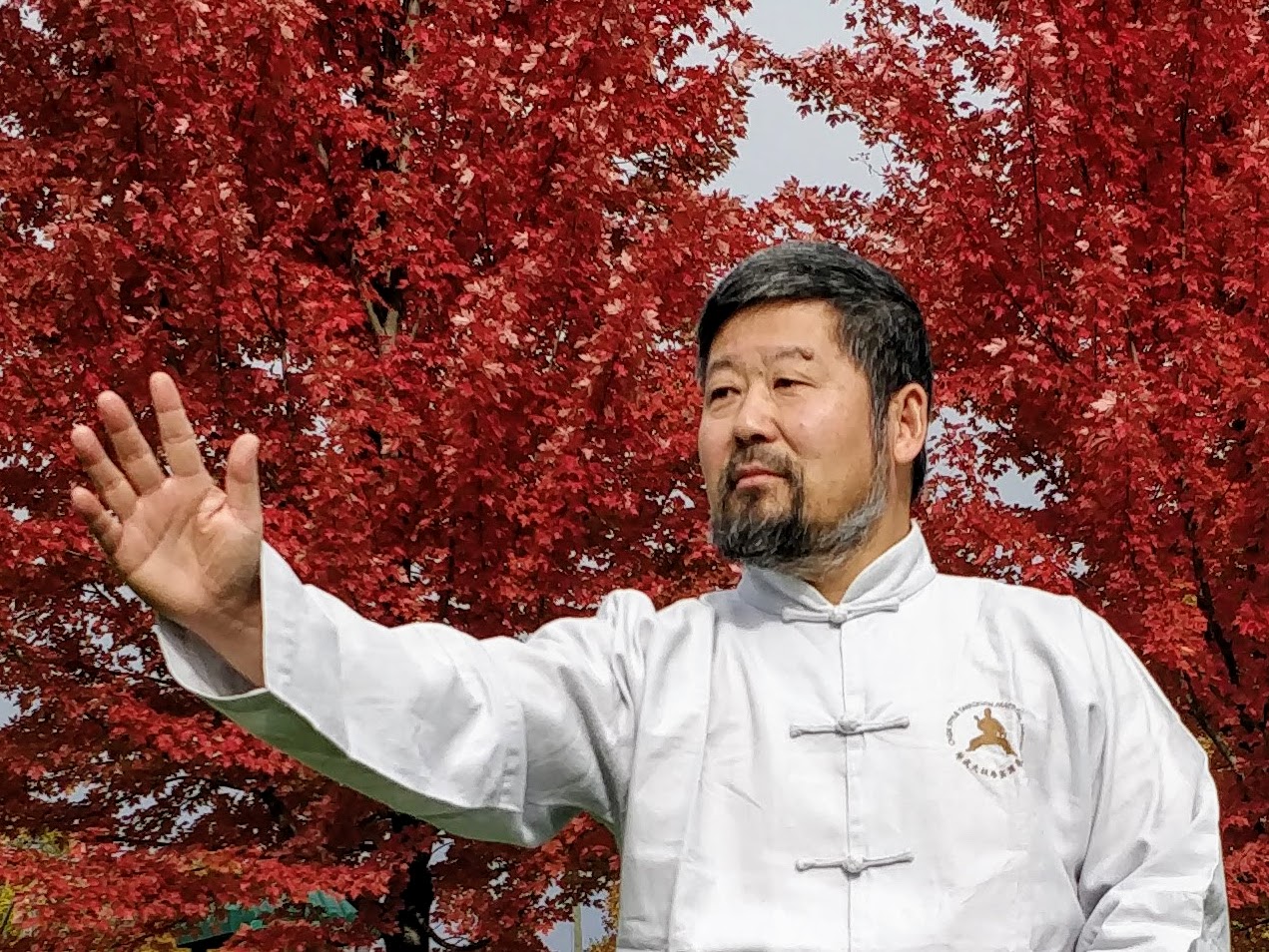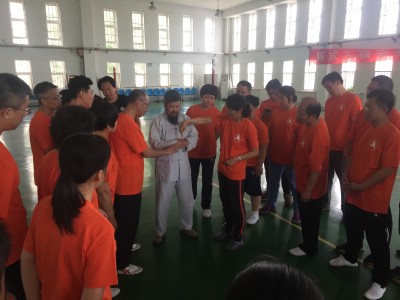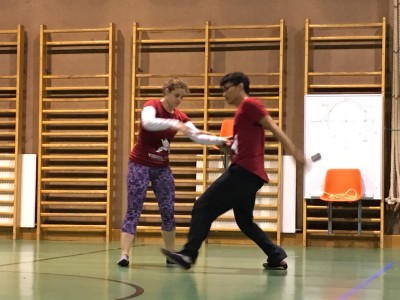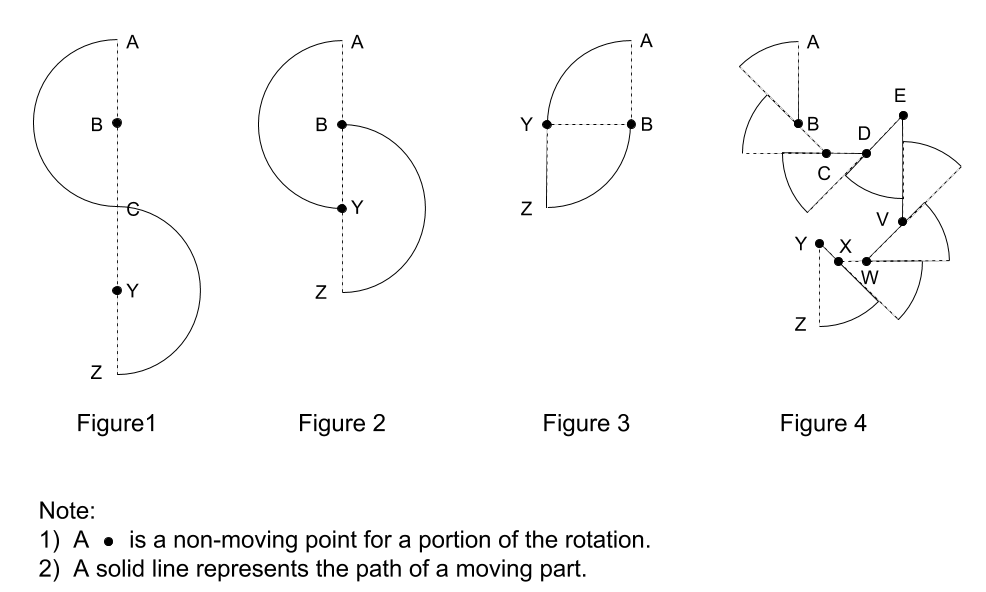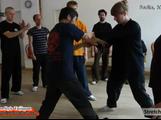Knowledge : Articles
Momentum force: A force with inertia. Momentum force is simply the force generated by movement. It is an active power. Sometimes this force is unstoppable. What we usually hear is “it’s hard to gather overwhelmed water”, and “the arrow sent out” is this kind of force. In the simplest terms, we throw a stone out, and once it’s out, although in the air, we are no longer able to change its direction or force. Synonyms: active force, dynamic force. Read more
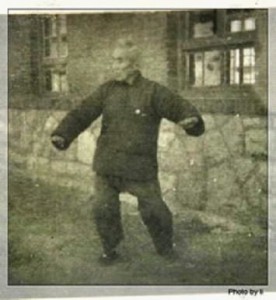
Being soft inside and hard outside is a movement principle and concept of Chen Style Taijiquan Practical Method. Intuitively, the inside is soft, movable and active. The outside must be harder than the inside so that it can wrap things inside. Thus, the outside is fixed, passive, and a manifestation of the inside.
This feature is the opposite of the common sense of softness with rigidity, and needles hidden in cotton. The normal understanding of Taijiquan is that it looks soft like cotton, but there is hard steel hidden inside.
The “softness” of Chen Style Taijiquan Practical Method is hardness to the extreme is softness, not softness in the ordinary sense. At this point, it is likely to be different from other Taijiquan cognition. This is also a major feature of Practical Method. Read more
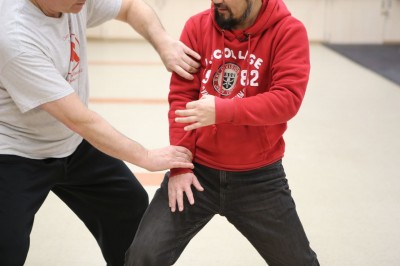
Hardness to the extreme is softness. Once it reaches the end, cannot be any harder, but soft.
This softness is actually very hard, fine and smooth, such as polished jade, polished stone, stainless steel surface, glass screen of mobile phone, etc.
From these examples, it can be seen that the softness of Taiji is not true softness, but an appearance of softness on the outside, it is actually hard and rigid. Read more
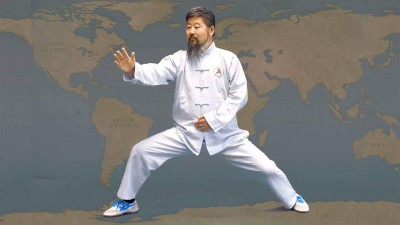
Chen Zhonghua Zhuanyong-Chen Zhonghua Block Touching Coat
Taijiquan has the saying that “yin and yang are mutually rooted”.
Wang Zongyue said, “Yin does not depart from yang, yang does not depart from yin. Yin and yang benefit mutually and this is the comprehension of energy”.
Zhou Dunyi of the Song Dynasty said in Taiji Illustration, “Wuji then taiji. Taiji moves and produces yang. Move to the extreme generates stillness, stillness produces yin, and stillness to the extreme generates moves again. Movement and stillness are the roots of each other. Once yin and yang are split, then there are two elementary parts.” Read more
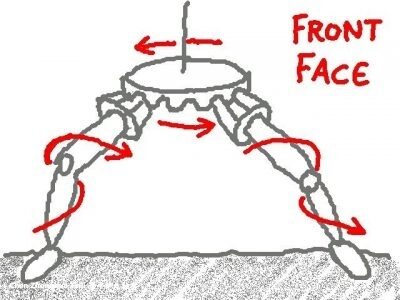
John Hudson-Silk reeling。
Structural force and indirect power are two different things, and at the same time two things that are not in one [dimension]. Read more
Middle finger: leading the energy
Index finger: issuing the power Read more
In push hands, the first thing we need to do is to have peng energy. What does this mean? It requires us to be able to lock the opponent on the touch, confront him, without showing any disadvantages. We mustn’t show any weakness at the first place. Only like this, we will have the confidence to win.
What is confidence? Confidence is real gong fu. Without it, there is no use if you just feel good about yourself. How to gain real gong fu? Of course it is through years of training.
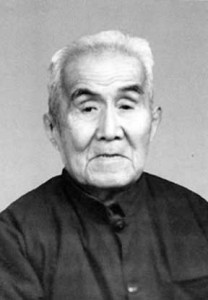
Read more
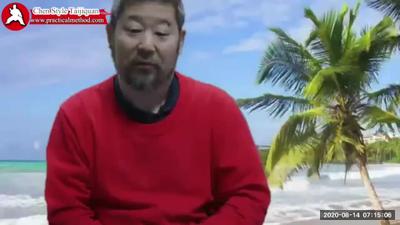 Master Chen Zhonghua’s Online Lesson on Dixian (Bottom Line) on August 14, 2020.
Master Chen Zhonghua’s Online Lesson on Dixian (Bottom Line) on August 14, 2020.
Presenter: Chen Zhonghua Length: 56 min. In: English Year: 2020 Difficulty:1/5 At:Edmonton Chen Zhonghua Taiji Academy
Some of my own thoughts on Taiji Practical Method after mountain biking. Read more
Youtube video suggested by James Tam:
Bees, Bubbles and Taiji
What’s common between all the above entities? You guessed it – Emergence!

Observing their behaviour shows how distinctly order emerges out of what looks like chaos when looked at superficially.
From work of bees in beehives and work of ants in colonies to swarming of birds or school of fish almost everything in nature display Emergent behaviour. All these earthly creatures act locally doing simple repetitive activities following a fixed rule but collectively they can overcome problems and perform complex feats.
Read more

Ever wondered why Taiji is so magical especially at the hands of true masters?
I first experienced that magic when I met Master Zhonghua Chen in Daqingshan on a warm July evening of 2012. Ever since that moment I have developed a fixation of sort to figure out what is behind that magic – it is so ever present in everything Master Chen does, it is impossible to differentiate between the magic and the magician! Read more

Energy path is the pathway that energy travels on. There are both a physical path and a virtual path for a given setup. For any three points in the body, they can form a triangle (unless they all fall into one straight line). For this discussion, let’s use right hand, left kua and left foot as the three points. As similarly discussed in this previous article, while the right hand and left kua form one physical (solid) line, and the left kua and left foot form another physical (solid) line, the right hand and left foot form a virtual (invisible) line. While the actual energy travels along the two physical lines, it can be viewed as if it travels on the virtual line.
Read more
Up until the 2019 seminar in Iowa I did not know my moves were fake. My moves imitated the real thing but were not real. They still are not what I want them to be, but now I have the tools to get me closer to the real thing. Master Chen showed me how to find the line.
There is a line to be found in all Practical Method motions. The hand and elbow has to stay on track. A good way of understanding this is comparing the motion to a bi-folding door. There is a fixed end that does not move, the handle and the end that moves on the track. The shoulder is the fixed end, the elbow is the handle and the hand is the end that is on the track. The handle pulls the door open and pushes it shut. The end on the track does not perform the action. The elbow pushes and pulls the hand on the track. The hand never moves. This concept should eventually spread throughout the body. Master Chen explains this the best on the “Sydney 2014 Workshop 1” Online Video. This video contains a lot of valuable information.
Currently I am working this concept in my yilu. I am also working on not moving the mid-line of my body as well as keeping a knee fixed during transitions. I have a long way to go, however thanks to Master Chen and the disciples at the Iowa summer training camp, I have the tools to get me where I need to be for the next time we meet up.
My current first 13

Today, there was a discussion among some of the North American disciples on intent. What is it? What does it mean?
The discussion allowed me to solidfy a couple of things.
In 2019 Iowa Camp, shifu mentioned:
Spencer’s notes:
The camp’s lessons this time were pervaded by the idea of “intention”. Intention in PM is what we call “to lead”. For example, in the positive circle, the elbow in is the “lead” Intention has no meaning in itself, but it changes everything. I am starting to realize this is one of the reasons Master Chen’s form looks so much different than mine and I can never figure out why. Your eyes can only see movement. The act of leading translates to intention, and when intention is used, the action is different. In with elbow, turn at waist, out with hand… You have to be clear about those intentions. Say them aloud! When the intention is clear, you produce a very thin line. From one large thing, you pull out one dot. This is the concept of silk reeling. Read more
Recently at a 2019 Toronto CA workshop hosted by Kevin Ho, Master Chen Zhonghua demonstrated and taught the participants a training drill that requires the starting position to have the rear heel off the floor and both hands in a double push position, chest high. While going over this drill and teaching to the finer more precise details, he offered that we students feel his back leg starting positions with our hands. One hand was to be placed on the ankle while the other on the inside thigh to feel the active tendons and muscles. He suggested that students pull or rake across these two areas to gain a better understanding of the physical requirements for the drill. When I took my turn, pulling across these areas, something registered with me to the feeling of the amount of tension in the leg as well as what precisely for this move was being used to generate such great power, and speed.
Read more
 This week, I found myself able to drill the opponent down causing him to eventually fall vertically to the ground. Read more
This week, I found myself able to drill the opponent down causing him to eventually fall vertically to the ground. Read more
Foundations corrections
Positive circle correction (3-count):
- Before I start the first positive circle the middle finger of the front hand must concentrate on a dot. The front middle finger is no higher than the eyebrow. The elbow and palm of the front hand are directed towards the floor. There is a stretch from the front middle finger to the rear foot. The front forearm is stretched and the front shoulder is pinned down (it does not move).
- Keep wrists straight throughout. Read more
 Today, I trained with John Dahms. We discussed about creating a shell around ourselves to prevent ourselves from moving. Creating such a shell is only half of the equation, the other half is that we must stretch/expand the inside as much as possible. This is like a fight between containment and breakout. It is a conflict that we must find a resolution. I think of it as building up a bomb, and then doing a controlled release of the energy through a narrow tube aimed at the target. For this to work, the person doing the containment should be different from the person trying to break out, so that each person is not affected by the other person when performing the desired function. The difficulty comes when in reality there are no two people, but just myself. Ideally, I would be required to split myself into two. In actual practice, we need to use different body parts to perform these separate functions, so they don’t interfere with each other. These actions must be clear. Read more
Today, I trained with John Dahms. We discussed about creating a shell around ourselves to prevent ourselves from moving. Creating such a shell is only half of the equation, the other half is that we must stretch/expand the inside as much as possible. This is like a fight between containment and breakout. It is a conflict that we must find a resolution. I think of it as building up a bomb, and then doing a controlled release of the energy through a narrow tube aimed at the target. For this to work, the person doing the containment should be different from the person trying to break out, so that each person is not affected by the other person when performing the desired function. The difficulty comes when in reality there are no two people, but just myself. Ideally, I would be required to split myself into two. In actual practice, we need to use different body parts to perform these separate functions, so they don’t interfere with each other. These actions must be clear. Read more
Master Chen has stated before fajin is everything is in the correct place, add speed. How do we add speed?
Read more
Read more
 In the Ottawa Mar 24-25, 2018 workshop, Master Chen Zhonghua re-emphasized the importance of creating a differential. He mentioned that steam would always rise up through an opening in a pot, and water would always run down a fall. These are examples of having a differential. We don’t force the steam up or push the water down. It is the property of steam or water given the situation. As long as the particular situation happens, the steam or water will simply behave that way. Steam and water are examples of a differential in position. There are also timing differential, power differential, length differential, movement differential, etc.
In the Ottawa Mar 24-25, 2018 workshop, Master Chen Zhonghua re-emphasized the importance of creating a differential. He mentioned that steam would always rise up through an opening in a pot, and water would always run down a fall. These are examples of having a differential. We don’t force the steam up or push the water down. It is the property of steam or water given the situation. As long as the particular situation happens, the steam or water will simply behave that way. Steam and water are examples of a differential in position. There are also timing differential, power differential, length differential, movement differential, etc.
Recently, I understand more about the statement:
“Rotation is the result of linear movements.”
Our actions are like on the tangent of a circle. The non-moving dot is the centre of the circle. Every linear action is very small. The direction changes all the time. The sequence of such actions along with non-moving dot cause the rotation. The actions are continued on top of each other, and they have a relationship with the non-moving dot. In the form, it is like dragging the flesh around some non-moving rod or dot. It is almost like someone pushes the arm on one side for elbow in, and someone else pushes the other side of the arm for hand out. This is related to the stretch that Master Chen Zhonghua showed on the inside or outside of the forearm. Another example is that if someone touches me in the front, I don’t move the front, but I stretch the back over or around that non-moving front.
Read more
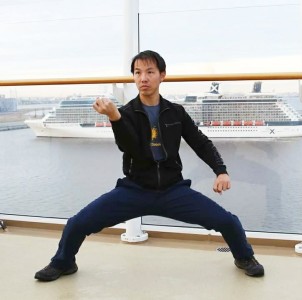 Yi (intent) is not just a thought. In my current understanding, yi describes an ability for your body to do a precise action as you command it to do. In other words, your body listens to your brain. It takes training to get to that state. Master Chen Zhonghua has said before, “the real intent is no intent”. Think about riding a bike as an example. After you have learned how to ride a bike, you don’t think about how to coordinate your hands and feet, how to balance, you only think about where to want to go. You appear to be able to do it with ease. For taijiquan, we need to train long enough to make an action habitual, so that we don’t think about it when we need it, and it just comes out.
Yi (intent) is not just a thought. In my current understanding, yi describes an ability for your body to do a precise action as you command it to do. In other words, your body listens to your brain. It takes training to get to that state. Master Chen Zhonghua has said before, “the real intent is no intent”. Think about riding a bike as an example. After you have learned how to ride a bike, you don’t think about how to coordinate your hands and feet, how to balance, you only think about where to want to go. You appear to be able to do it with ease. For taijiquan, we need to train long enough to make an action habitual, so that we don’t think about it when we need it, and it just comes out.
Read more
Who is a true disciple?
A true disciple is someone who follows the teacher based on the principles of the teachings. When the teacher evolves in his understanding, a true disciple will do the same. Even if the teacher and the true disciple don’t see each other for an extended period of time, their evolutions will still head in the same direction.
Principle: Separation of Yin and Yang
Concept: Indirect Power
Action: In with elbow no hand, out with hand no elbow.
These are three ways of describing taiji. They are one and the same.
Master Chen Zhonghua discussed the above during a Q&A session at the North American Practical Method Training Camp from Jul 29 to Aug 2, 2017.
To link movements together is to become double heavy. Instead of moving together, each body part must complete its’ designated role to complete a function. Desynchronized synchronization – first we must learn how to take our body apart before we can put it back together. Like a machine, the power only comes from every piece doing it’s job. One thing can only do one thing. The piston in an engine only moves up and down; it does not try to turn the wheel or to move the car forward. Within taijiquan, the machine does not fight. None of the actions of the body relate to fighting the opponent, only completing its’ designated job.
Within a one dimensional movement everything is connected. For example, as the hand moves forward in a push, the torso also moves forward, typically followed by the rear knee. In this way, everything moves together in order to generate power, this power is generated by strength and expressed through speed.
A two dimensional movement compounds the power of each body part by creating a non-moving piece. Each piece is able to successively ground off the last piece by creating a ‘wall’ to push off of. To create fewer or an unstable wall is to merge pieces together, resulting in power leaking out of the body or rebounding back. Power is dependent on the stability of the last piece. While we are learning to create this separation, our power is often not consistent enough to maintain the stretch. As we encounter power we revert back to a single dimensional push. A true two dimensional stretch is to maintain the separation despite obstacles.
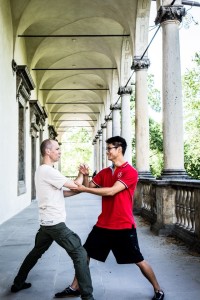
The creation of the non-moving part is a stretch by definition. Power is a differential; most commonly it is a differential of space by using speed. Within taiji we are creating a differential using stability, with each piece not merging. To merge powers is to create an unstable wall
In the previous example of a push, a two dimensional movement would separate the arm from the body. As the arm pulls or pushes, the torso remains unaffected. The torso not moving creates a ‘wall’ that the arm is able to push off of.
To be able to move in this manner is to move like a rotary saw. With a rotary saw the blade does not move on its’ own. The blade only rotates and spins, while the saw is pushed onto the wood. The cutting of the wood does not have to do with the blade rotating, it has to do with the wood being pushed onto the blade, or the saw being pushed onto the wood. The saw must move independent of the blade rotation – if the blade moves forward it is unable to rotate. Similarly, the torso does not move, only remains upright and rotates. The legs move the body forward/backwards, while the arms cut.
Therefore we must find a method to define the separation of our movements. Separation of the body applies on both a macro and micro scale. Not only must we separate in the cardinal directions (top/bottom, left/right, front/back), but also differentiate the role of the hand from the role of the elbow; what the purpose of the front shoulder is vs. the rear shoulder, etc.
Relevant videos:
http://practicalmethod.com/2015/01/no-tossing-separated-movements-online-video-trailer/
http://practicalmethod.com/2014/06/dimensions-5-points-online-video-trailer/
Within Chen Style Taijiquan, an important aspect is that all our movements must be our own movements. We never move as a result of an external stimuli. This requires we bring extreme awareness to every body part – those which are moving and especially those which are non-moving. When we go out with the hand, we must not forget about the elbow; as the torso closes the distance, the hands can’t also be moving forward, etc. As soon as we engage with our opponent, we naturally want to fight power with power. This immediate response is something we must eliminate through our training. Learning to create a stretch within our body in the form and foundations, is to learn how to move past the point of contact.
To never lose control of our body, even when engaging with an opponent, is to change our responses from a reactionary response to an active response.
A reactionary response is to retreat back, and then move in; or to match their push directly with your own push. A push from the opponent does not result in a fight, or a retreat backwards. An active response it to decide where to move, and to go their of your own choice – not from the initiation of the opponent. If we are pushed and the shoulder moves back, we move not because we are pushed, but because we decide to move there.
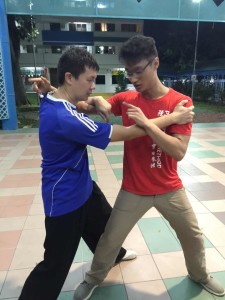
Brennan Toh with Shawn Lee
We must change from following the pace of the opponent, to leading our own movements. Within the rhythm of a fight, when you are able to dictate your own moves, the opponent will then follow (fall into rhythm). Movement is not a non-pressured release, but a pressured release like a hydraulic press where it must be evenly matched and paced (led). The intent of the movement is therefore only indirectly related to the opponent, and the decided movement is not at all resultant from what the opponent chooses to do – they are only an obstacle in place to overcome. This is a change from passive control over our body to active movement.
To train this, we must train to never close, and to continue to stretch and expand in every movement of the form. As our understanding of Yilu deepens, body mechanics and details that we were previously unaware of become more and more important. But before we can focus on the small details, our understanding of positioning of the ‘big pieces’ must be precise – which is why consistent training of the full form is required. As we continue to train to open our joints, positions and movements that we were previously incapable of will allow us to improve our structure and power.
Video references:
http://practicalmethod.com/2011/07/shoulder-movements-in-positive-circle-online-video-trailer/
http://practicalmethod.com/2014/11/pressure-and-release-indirect-power-online-video-trailer/
 Many years ago when I was just learning Yilu, I had questions about how the “Second Closing” (the move after fetch water) was done properly. I was just imitating the movement, the hand was waving from one place to another place. I had no idea where was the energy alignment in that particular move. Master Chen explained “Second Closing” with its application and tried on me. He turned and I was on the ground. It was that simple. I didn’t know, I could not figure out how Master Chen did. But I did know how powerful the “Second Closing” was.
Many years ago when I was just learning Yilu, I had questions about how the “Second Closing” (the move after fetch water) was done properly. I was just imitating the movement, the hand was waving from one place to another place. I had no idea where was the energy alignment in that particular move. Master Chen explained “Second Closing” with its application and tried on me. He turned and I was on the ground. It was that simple. I didn’t know, I could not figure out how Master Chen did. But I did know how powerful the “Second Closing” was.

